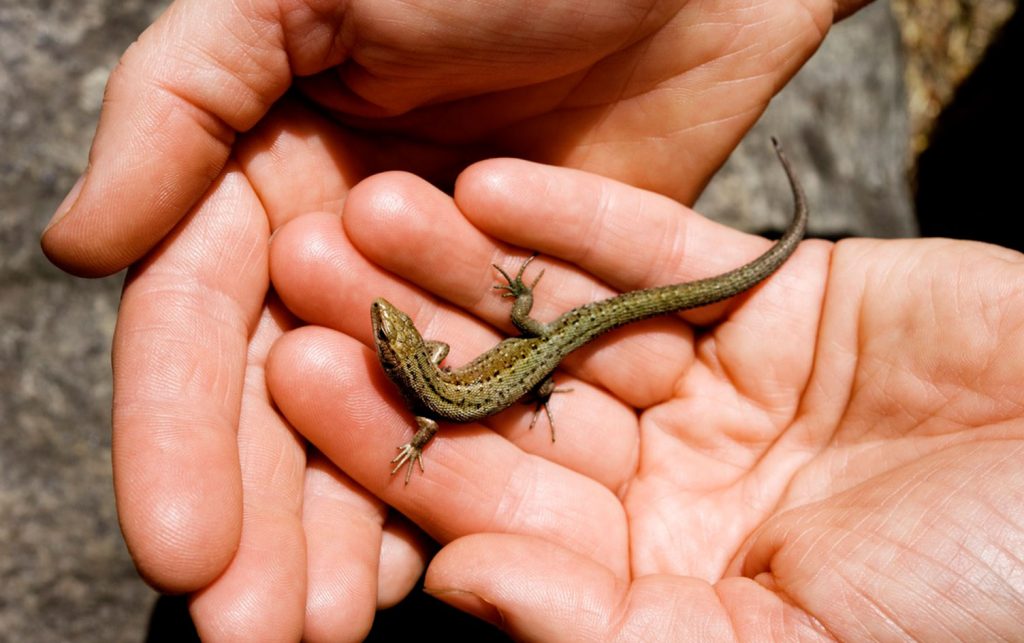
It’s safe to say comparing yourself to a lizard has probably never crossed your mind. And for good reason. But, we actually have more in common with these ancient, cold-blooded reptiles than you may think — especially when it comes to athletic ability.
Humans are often compared to closer animal relatives like primates, but when it comes to humans and reptiles, similarities are harder to wrap our heads around — especially when we think about training. It’s hard to see commonalities between us, and, say, an iguana. However, research led by Jerry Husak, PhD, an assistant professor at the University of St. Thomas in St. Paul, Minnesota, is beginning to open our minds to the possibility we’ve got more in common with lizards than we realize.
“My work is essentially about trying to see what kinds of trade-offs lizards make regarding athletic performance, because the responses lizards have are shared across all vertebrates, including humans,” Husak explains. “Lizards have their entire genome sequenced, so we know that they have all of the same genes [as humans] that turn on and off during exercise.”
THE LIZARD-HUMAN CONNECTION
Because of this shared response and their sequenced genome, lizards are actually an ideal specimen to study to understand the effect exercise has on our bodies. Related factors, like diet, can be manipulated in a drastic way in lizards that isn’t possible for humans. “We give the lizards different exercises, but by also restricting their diet, we can really get at metabolic things like the mechanism behind obesity and how it might work on the molecular level since we can manipulate these conditions extremely in lizards,” Husak explains.
After exposing the lizards to endurance training, “their oxygen carrying capacity [also known as RBC] increases, their hearts get larger [like we see in human athletes], and we notice changes in their muscle fibers. The big-level effects are the same.” Knowing about the bigger effects means scientists can study the small-scale, molecular effects. They’re exploring whether the molecular pathways in lizards are the same as they are in humans. This is important because molecular pathways essentially define what our cells do and how they function at the most basic level.
THE EFFECTS OF EXTREME EXERCISE
“[Through our lizard research], we’ve been able to see the whole molecular cascade [i.e., what’s happening at the molecular and cellular level when we exercise] and we can get a sense of all the benefits of exercise for us, like decreasing obesity and even the cognitive benefits that actually change the metabolic structure of the human brain,” Husak explains. Additionally, his work can begin to model and point to the long-term effects of extreme exercises like HIIT and CrossFit on human bodies.
“[Extreme exercises] don’t just affect a couple of things — they have really widespread effects in the [entire] body,” Husak notes. His lizard research also shows it’s possible to advance athletic ability to the detriment of other vital body functions. His work has illustrated that, even when their immune systems are repressed and their ability to reproduce has been compromised, lizards continue to improve their endurance skills. We can see this in humans, too, when women do extreme exercise, overtrain and lose the ability to menstruate.
READ MORE > GOT 15 MINUTES? SHORTER WORKOUTS MIGHT BE BEST
Therefore, it’s likely our athletic ability has evolved over time, pointing to the idea that training is an inherent, important trait for all humans, regardless of how often we work out. Our athletic ability isn’t some kind of bonus talent only elite humans possess. “Because the response to exercise is seen across all vertebrates, it’s really implied that our ability to exercise the way that we do is something we inherited hundreds of millions of years ago — it must have been adaptive at some point in the past,” Husak hypothesizes.
The post What Lizards Can Teach Us About the Effects of Training appeared first on Under Armour.
(via MyFitnessPal Blog)






